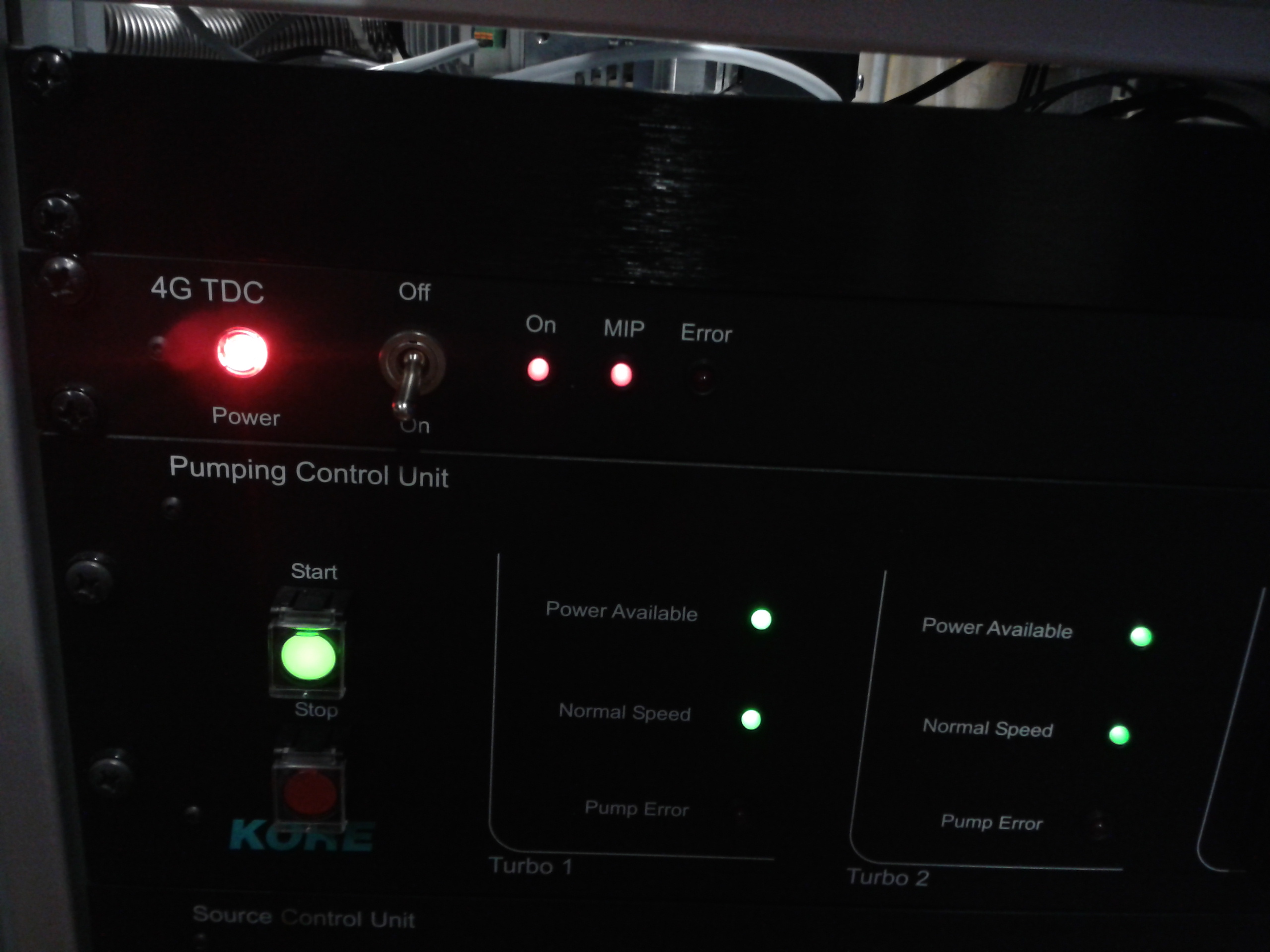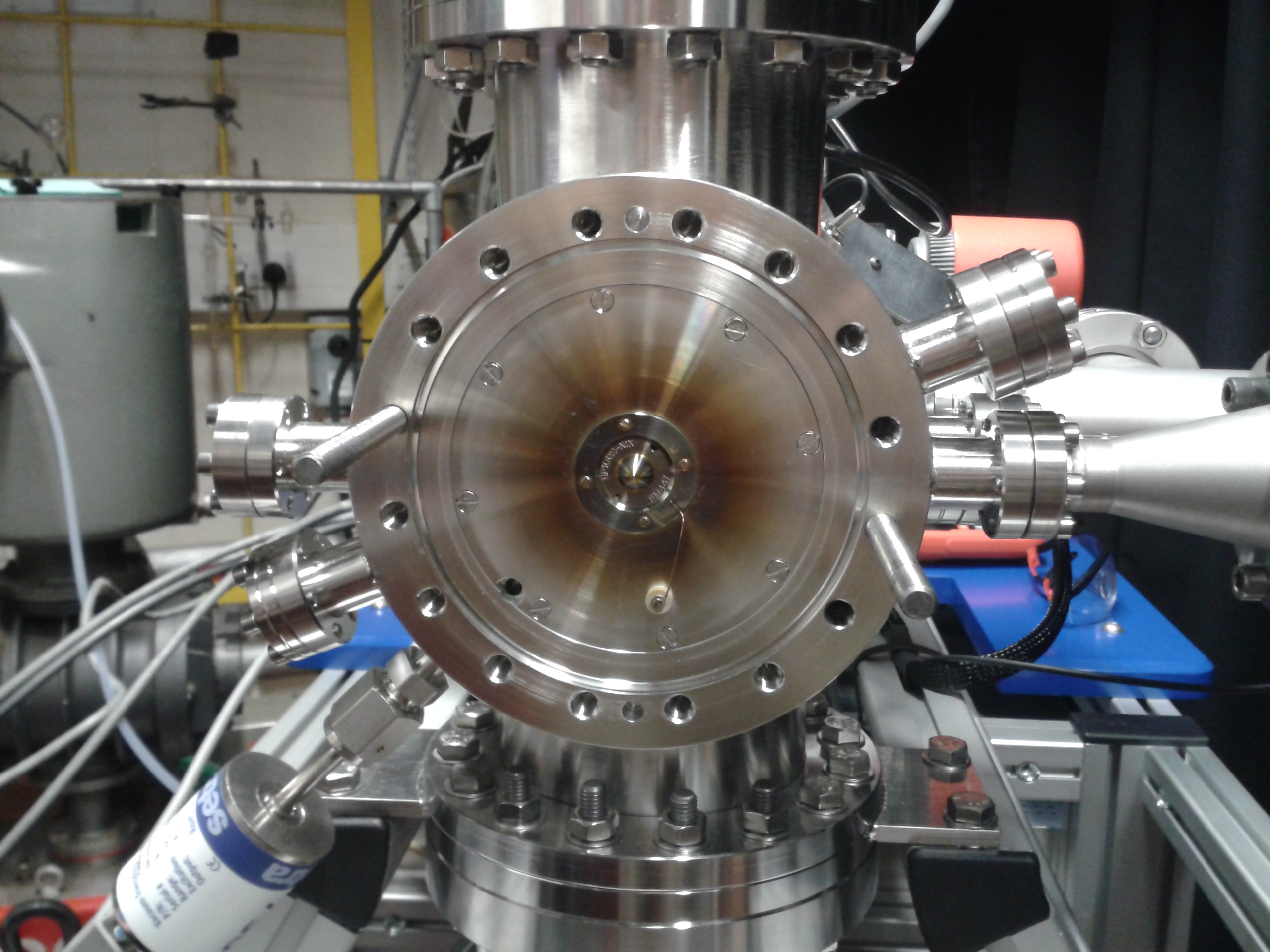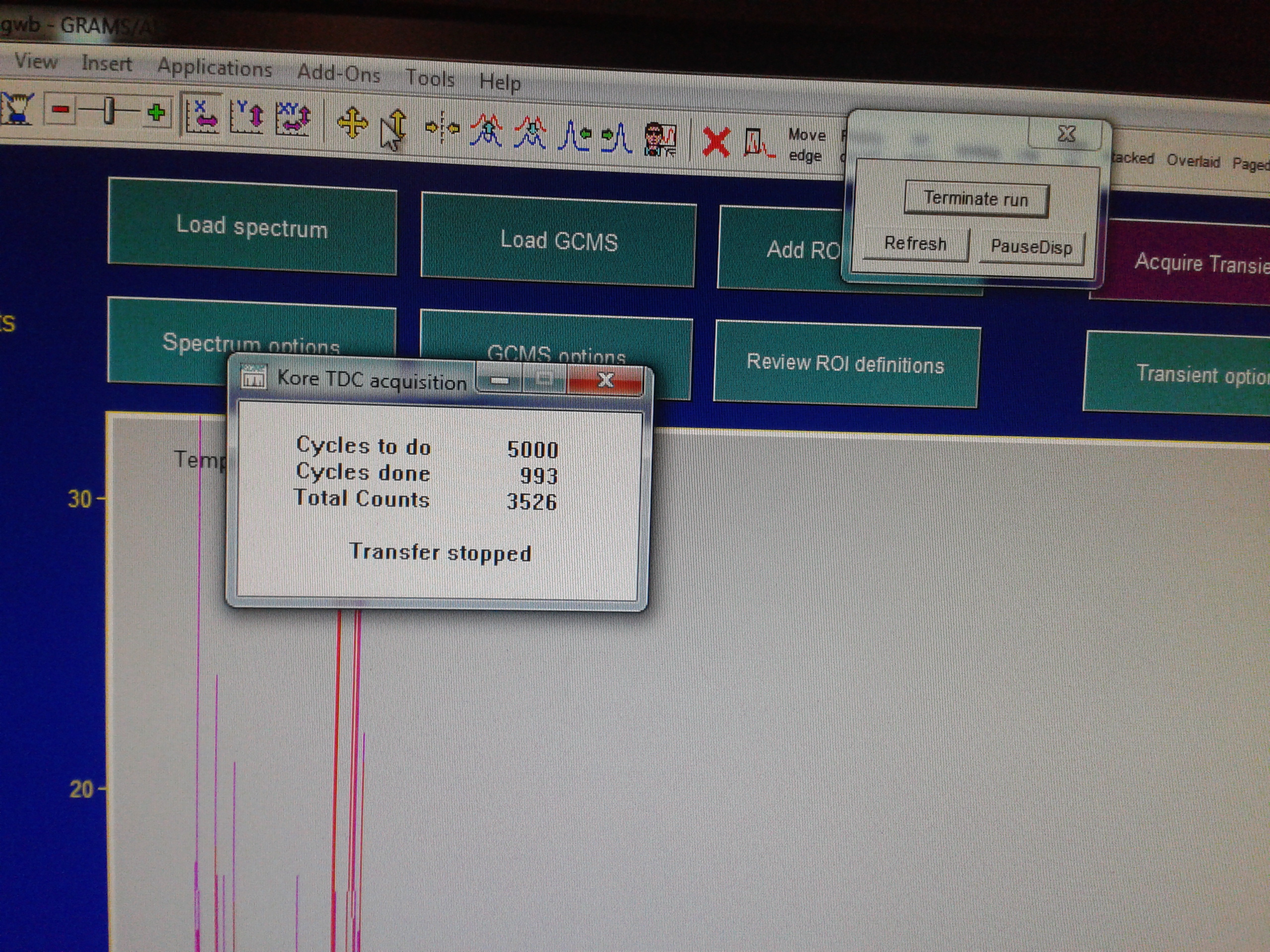Juan Carlos Gómez Martín
Científico Titular
Consejo Superior de Investigaciones Científicas (CSIC)
Instituto de Astrofísica de Andalucia (IAA)


The mesosphere begins at about 50 km and extends up to about 90 km. This is the coldest region of the Earth's atmosphere, with temperatures reaching as low as 120 K at the summer mesopause. Above the mesopause temperatures begin to rise in the atmospheric region known as the thermosphere, which extends for several hundred kms. The transition between the neutral atmosphere and the ionosphere starts at an altitude of about 70 km. The inner solar system is full of dust particles originating from cometary trails and collisions between asteroids. Tens of metric tons per day of submillimeter-sized meteoroids, also termed interplanetary dust particles (IDPs), are swept up by Earth as it orbits around the Sun. Because of their high atmospheric entry velocities (11-72 km/s), IDPs experience rapid frictional heating with air molecules, which can cause them to melt and rapidly vaporize, forming a meteor. Meteoric ablation is the process by which the elemental constituents (O, Si, Fe, Mg, Ni, Na, Ca, Al, etc.) of an IDP captured by the gravity of a planet are released in the atmosphere due to sputtering by collisions with atmospheric molecules and thermal evaporation. This process occurs between 80 and 120 km above the Earth’s surface in the mesosphere-lower Thermosphere region (MLT). As a result of this continuous extraterrestrial input, permanent and layers of metal atoms and ions exist in the MLT. This happens not only on Earth, but also in Mars and Venus and most likely also in other planets and moons with dense atmospheres (e.g. Titan). The top side of the mesospheric metal layers is shaped by the interplay between neutral and ionic species, which also determines the appearance of high-lying sporadic layers. On the lower ledge of the metal layers, meteoric elements react with atmospheric constituents forming new molecules, which eventually condense as Meteor Smoke Particles (MSPs). MSPs serve as condensation nuclei for H2O on the Earth’s Mesosphere, forming the so-called noctilucent clouds, whose frequency is increasing as a consequence of changes in temperature and water content of the upper atmosphere. On Mars MSPs act as condensation nuclei of high-lying CO2 clouds. On Earth (and Venus), MSPs interfere with the atmospheric sulfur cycle and chemically influence stratospheric aerosol, which implies impacts on radiative transfer and ozone depletion. Evidence also exists that this extra-terrestrial input results in deposition of bioavailable Fe at the ocean’s surface. IDPs are carriers of elements of astrobiological and climatic relevance, e.g. carbon, phosphorus and sulfur. The 2017 Vilhelm Bjerknes Medal was awarded to Professor John M. C. Plane in recognition of his groundbreaking work in atmospheric chemistry, including fundamental contributions to the study of metal layers in the upper atmosphere. I worked in Professor Plane’s Planetary Atmospheres lab (the Challenger lab at the School of Chemistry of the University of Leeds) as a senior laboratory scientist for 7.5 years in total. This work resulted in the measurement of the rate constants (in many cases including temperature and pressure dependence) of over 40 chemical reactions of upper-atmospheric and astrochemical relevance. I have collaborated with JMCP in the context of NERC and STFC-funded projects, as well as in other lower atmosphere projects.
Historically, the study of the sodium layer facilitated the understanding not only of the gas-phase chemistry of sodium but also of the chemistry and dynamics of the mesosphere as a whole (e.g. gravity waves). Na has a strong resonance line in the yellow part of the spectrum and therefore extensive nightglow emission and resonance fluorescence lidar measurements have been carried out over decades. Radiation at 589 nm in the nightglow spectrum was first reported more than 80 years ago (Slipher, 1929). Explaining the presence of the Na layer in the upper mesosphere and its variability has required investigating the major Na reservoirs and sinks, especially regarding their photolysis and photoionization cross sections and temperature-dependent rate constants
Mg and Mg+ cannot be observed by ground based atomic resonant lidars, since their resonant atomic transitions occur in the UV, where stratospheric ozone absorption is strongest. However, Mg+ layers have been revealed by rocket-borne mass spectrometry on Earth and both Mg and Mg+ permanent global layers have been observed from above by ENVISAT/SCIAMACHY orbiting around Earth. The fascinating observation of Mg and Mg+ layers in Mars by MAVEN/IUVS and NGIMS [1] [2] [3] after the flyby of comet Siding Spring confirmed meteoric metal layers in a planet other than Earth. A permanent martian Mg+ layer has been since documented by MAVEN’s team [1] [2]. Atmospheric models has been constructed including work on magnesium neutral and ion−molecule chemistry carried out at Professor Plane’s lab in Leeds. The model can reproduce some of the key features of the Mg and Mg+ layers on Earth, including the heights of the layers, the seasonal variations of their column abundances, and the unusually large Mg+/Mg ratio. The Martian magnesium layer shows non-Earthlike features that are still poorly understood.
Silicon is the eighth most common element in the Solar System, very close to Mg (seventh) and Fe (night). Silicon is one of the most abundant elements in cosmic dust, and meteoric ablation injects a significant amount of Si into the atmosphere above 80 km. The fraction of silicon which ablates from this dust in the upper atmosphere is highly dependent on the dust size and entry velocity. Although neutral silicon compounds of extraterrestrial origin have not yet been detected in the mesosphere/lower thermosphere (MLT) region between 70 and 120 km, Si+ ions have been measured by rocket-borne mass spectrometry. A new model for silicon chemistry in the MLT, based on a number of recent laboratory kinetic studies of Si, SiO, and Si+, is in reasonably agreement with rocket-borne mass spectrometric observations of Si+ and predicts that the counterpart of the Na and Fe layers is a layer of SiO, not of atomic Si, mainly as a result of the fast reaction of Si and O2. Theoretical calculations have shown that Si(OH)4 (silicilic acid) is a very stable atmospheric sink for meteoric silicon, whose likely fate is polymerization with metal oxides and hydroxides to form meteor smoke particles.
Biogenic and volcanic emissions of sulfur compounds from the Earth’s surface are directly related to the aerosol content of the troposphere and stratosphere, which is a major topic in atmospheric science due to its impact on radiative transfer and ozone depletion. The abundance of sulfur in extraterrestrial material is ~2% wt in ordinary chondrites and 2–6% wt in carbonaceous chondrites. Some studies have deemed the present-day input of meteoric sulfur into Earth’s atmosphere too low to constitute a significant source of lower atmospheric sulfur. On the other hand, meteoric smoke particles (MSPs), which result from the recondensation of metal vapors in the upper mesosphere, are believed to impact stratospheric H2SO4 and sulfate aerosols (H2SO4-H2O droplets). JC led recently a study with the whole atmosphere chemistry-climate model CESM1-WACCM in collaboration with Wuhu Feng (University of Leeds), Michael Mills (NCAR) and Michael Hoepfner (KIT), where it was shown that cosmic dust ablation is the major source of sulfur to the MLT and the lower mesosphere, creating a layer of sulfur monoxide (SO) peaking at 90 km with a higher number density than the meteoric Fe layer. A photochemical equilibrium is established between SO and SO2 in the MLT, where the partitioning changes seasonally with solar illumination. Because of the lack of chemical sinks for SO2 in the mesosphere, most of the meteoric sulfur is transported into the upper stratosphere as SO2, where according to the simulations it contributes significantly to the nucleation of sulfate aerosol in polar spring. The present-day input rate needs to be on the order of 1.0 t S d-1 to be consistent with all the observations available, including rocket borne observations of SO+ in the MLT, and MIPAS SO2 retrievals and balloon borne CN measurements in the middle and upper stratosphere. This input of meteoric sulfur translates into similar overall input rates of cosmic dust than deduced from the measured Fe and Na fluxes (~43 t d-1).
Four neutral metal atoms, Na, Fe, K, and Ca, can be observed from the Earth’s surface using the resonant lidar technique; uniquely for ground-based observations, the Ca+ ion layer can also be observed and occurs ∼5 km above the neutral Ca layer. Although Ca has a similar elemental abundance to Na in meteorites, the Ca atom abundance in the MLT is roughly 2 orders of magnitude smaller than that of Na. One reason for this Ca depletion is the highly refractory nature of CaO in molten meteoroids, so that Ca ablates about 1 order of magnitude less efficiently than Na. We confirmed this differential ablation at Leeds using a novel meteoric ablation simulator. A second reason for the Ca depletion may be that Ca is converted to very stable reservoir species. JC’s experiments at John Plane’s lab showed that the formation of O2CaOH slows the conversion of CaOH to atomic Ca via reaction with atomic H. O2CaOH is likely to be long-lived reservoir species on the underside of the Ca layer and a building block of meteoric smoke particles. The surprising observation that the Ca+/Fe+ ratio is ~8 times larger than Ca/Fe between 90 and 100 km in the atmosphere can be explained quantitatively by the known ion-molecule chemistry of these two metals.
The atomic Fe layer at polar latitudes has a mean centroid altitude of around 88 km. Recent lidar observations at polar latitudes show a downward extension of the layer below 80 km during sunlit periods. FeOH should be the dominant reservoir for atomic Fe below 95 km. One way to dissociate FeOH at sunrise is via reaction with atomic H which is produced by photolysis of H2O in sunlit periods. However, during nighttime the concentration of this radical decreases rapidly below 82 km, so that FeOH becomes a stable reservoir for Fe. Within the current understanding, atmospheric chemistry models such as Whole Atmosphere Chemistry Climate Model (WACCM)-Fe [Feng et al., 2013] have so far been unable to correctly reproduce the bottomside extension of the Fe layer. FeOH does not show a LIF spectrum (cf. successful detection of CaOH). At Leeds, JC explored the potential detection of FeOH by single- and multiphoton ionization time of flight mass spectrometry in order to study FeOH photolysis and reaction with H. He did not observe any evidence of FeOH (cf. successful detection of NaOH). The stability of 57Fe (isotopic abundance 2%) results in a large background of 57Fe16O against which 56Fe16OH is hard to constrast. JMCP resorted to a combination of atmospheric lidar observations, quantum chemical calculations, and atmospheric modeling to derive the photolysis rate of FeOH which so far has not been measured. He showed that only the direct photolysis of FeOH can be fast enough to explain the bottomside extension of the mesospheric Fe layer at sunrise. On the top side of the Fe neutral layer, lower thermospheric Fe+ ions are oxidized by O3 to FeO+, and dissociative recombination of this ion with electrons provides the main neutralizing Fe+ below 110 km, as demonstrated by David Bones at Leeds.
Meteoric elements (mainly metals and silicon) deposited between 80 and 120 Km by the ablation of incoming meteoroids form permanent and sporadic neutral and ionic layer systems in then mesosphere lower thermosphere (MLT) region. The upper side of the layers is modulated by ion reservoirs formed by charge-exchage with atmospheric ions and photoionization and destroyed by dissociative recombination with electrons and reaction with atomic oxygen. The lower ledge of the layers is governed by reaction with neutral atmospheric constituents forming molecular reservoirs (simple oxides and hydroxides such as FeOH, NaOH etc.) that can be reactivated by photolysis or reaction with atomic oxygen and hydrogen, or proceed to form larger molecules (Si(OH)4, O2CaOH, FeO3…), clusters ((FeOH)n, (MgOH)n) and ultimately nanometer-size particles termed meteoric smoke particles (MSPs). MSPs are therefore the sink of meteoric metals in the atmosphere. These particles are believed to be involved in some important phenomena such as nucleation of mesospheric ice particles, the charge balance of the D-region, heterogeneous formation of water vapour in the mesosphere, interaction with sulfate aerosol in the upper stratosphere and the nucleation of polar stratospheric cloud particles which play a major role in the formation of the ozone hole. An important reason for studying MSPs in the mesosphere is their relation to noctilucent clouds (NLCs). These clouds were first reported in 1885, and have been growing brighter and spreading to lower latitudes through much of the last century, so that they appear to be a clear signal of climate change. MSPs are also believed to form in other planetary atmospheres. In Mars, MSPs likely act as CO2 cloud condensation nuclei. MSPs have been measured directly above 70 km by rocket-borne particle detectors. In the lower mesosphere, extinction caused by MSPs has been measured using the Solar Occultation For Ice Experiment (SOFIE) (a visible/near-IR spectrometer) on the Aeronomy of Ice in the Mesosphere (AIM) satellite.



Laser Ablation - Laser induced Fluorescence at the Challenger lab